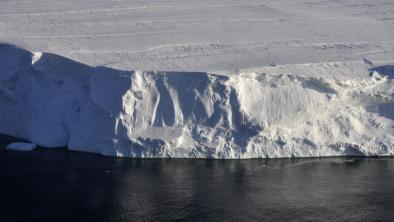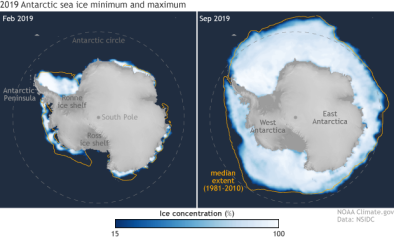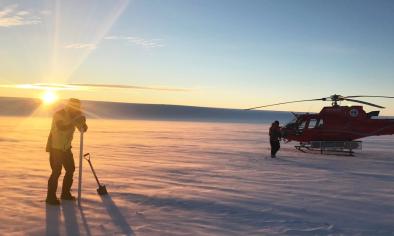Science Source
Changes in the freshwater composition of the upper ocean west of the Antarctic Peninsula during the first decade of the 21st century
- States that the west Antarctic Peninsula (WAP) has warmed more rapidly than anywhere else in the Southern Hemisphere in recent decades
- Uses a time series of hydrographic and stable oxygen isotope (δ18O) measurements collected at a near-coastal site in Marguerite Bay to quantify the prevalence of meteoric freshwater (glacial melt plus precipitation) separately from sea ice melt
- Finds that during 2002–2009, meteoric water dominated, with summer water column inventories of order 4–6 m
- Finds that summer sea ice melt inventories were lower, ranging from −1 to 0.5 m (where a negative value indicates net sea ice formation from this water)
- Finds (in the near-surface layers) the highest meteoric water prevalence in February 2006 (∼6%) and lowest in October 2007 (∼1%), whilst sea ice melt is highest in February 2005 (2%) and lowest in July 2002 (−2%)
- Finds the ranges in both meteoric water and sea ice melt are significantly larger than derived previously using a subset of the data, reflecting the strong interannual variability present
- Finds that the largest single determinant of the near-surface freshwater percentages is found to be changes in mixed layer depth—notably deep layers occurred in the winters of 2003, 2007 and 2008, due to northerly winds associated with El Niño/Southern Oscillation and the Southern Annular Mode
- Finds that changes in mixed layer depth led to greatly reduced sea ice cover in northern Marguerite Bay, and allowed persistent air-sea heat fluxes and stronger rates of sea ice production, which is a key factor in controlling mixed layer depth
- Discusses the possible role of interannual changes in wind-induced mixing in this context
- States that, as climate change at the WAP continues, further changes in each of the components of the freshwater budget are expected, and also changes in the vertical redistribution of this freshwater by oceanographic processes
Related Content
Headline

Jan 29, 2020 | BBC News
Journey to the 'doomsday glacier'
Headline

Nov 22, 2019 | NOAA Climate.gov
Understanding climate: Antarctic sea ice extent
Headline

Mar 26, 2019 | The Guardian
Australian researchers find huge lakes beneath largest east Antarctic glacier
Science Source
| Geophysical Research Letters
Mass Loss of Totten and Moscow University Glaciers, East Antarctica, Using Regionally Optimized GRACE Mascons
Yara Mohajerani, Isabella Velicogna, Eric Rignot


